01/05/2025
Hal, Rob, Jon, Luke, Chris, Bog, Joe
Massive team tonight, mostly because I wasn’t expecting to make it back from Dover on time and just about managed. Me Luke and Hal started on surface whilst the others hit the dig. Firstly they passed up my datalogger which has been measuring the temp and humidity since last week, which I then sat on surface with my laptop and downloaded the data like a proper geek; more on that later.
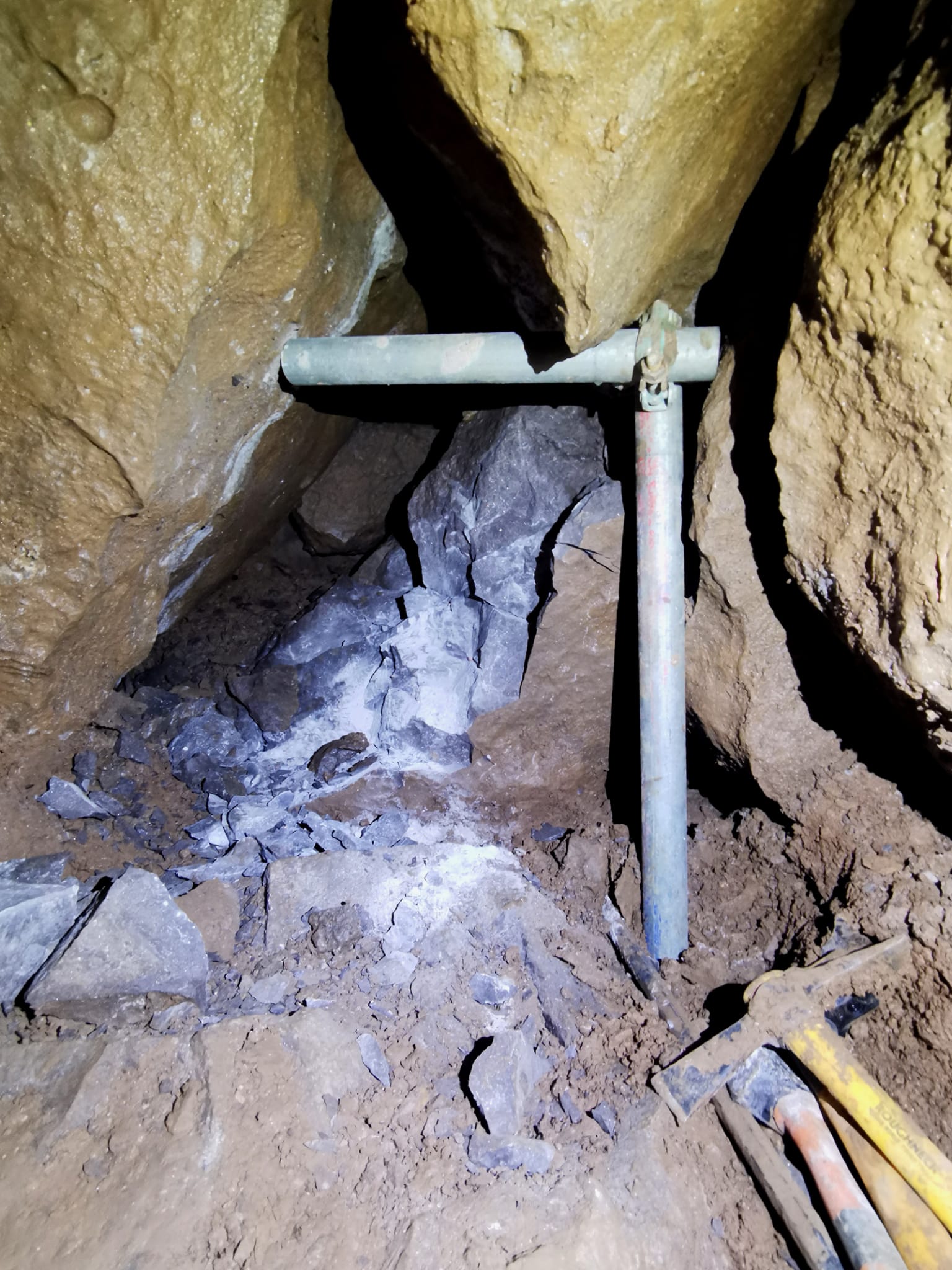
At the dig they finished off taking the floor a bit lower then installed some minimal scaffolding to protect the way forwards. Once in they started to attack the boulder. We had hoped to have some remote pills for this but nobody brought any so we had to rely on our trusted caps. A brave move considering the positioning; I was happy to not be involved to be honest. However all seemed to go ok, the scaf took some weight and the boulder started to shrink. By the end it is now possible to see passed the boulder and into the rocks ahead, which look quite small and possibly tricky to be honest, but we’ll know more after the next trip.
Before we left I set off a big smoke bomb, even though the draft had almost entirely disappeared, but it kinda felt like I input a little at least.
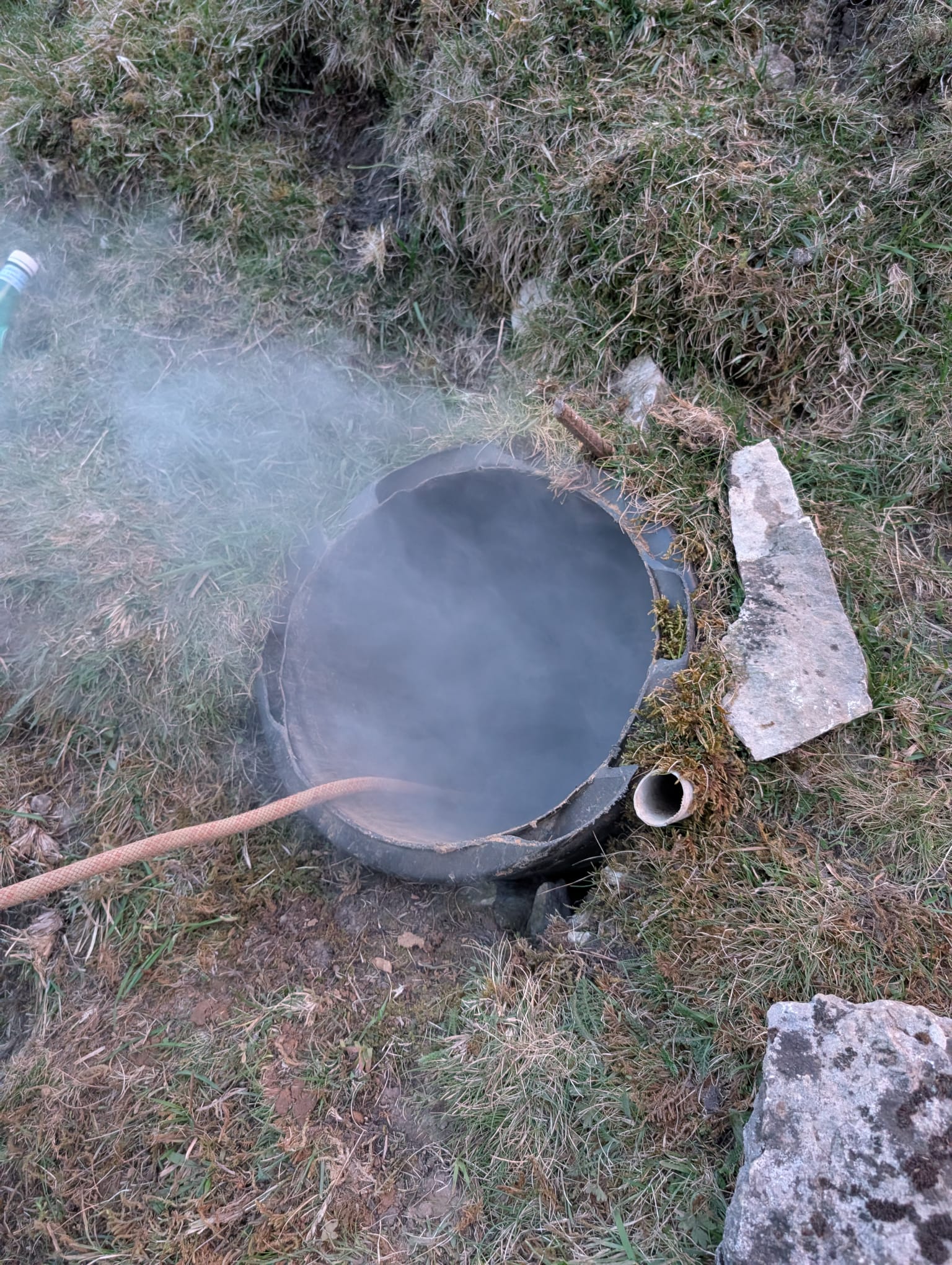
GEEKY BIT
Draught study
The temp and humidity logger was installed from 24th April to 1st May. During this period the weather was increasingly glorious, especially for Rowter Farm, so I was hoping for some excellent reversing being visible.
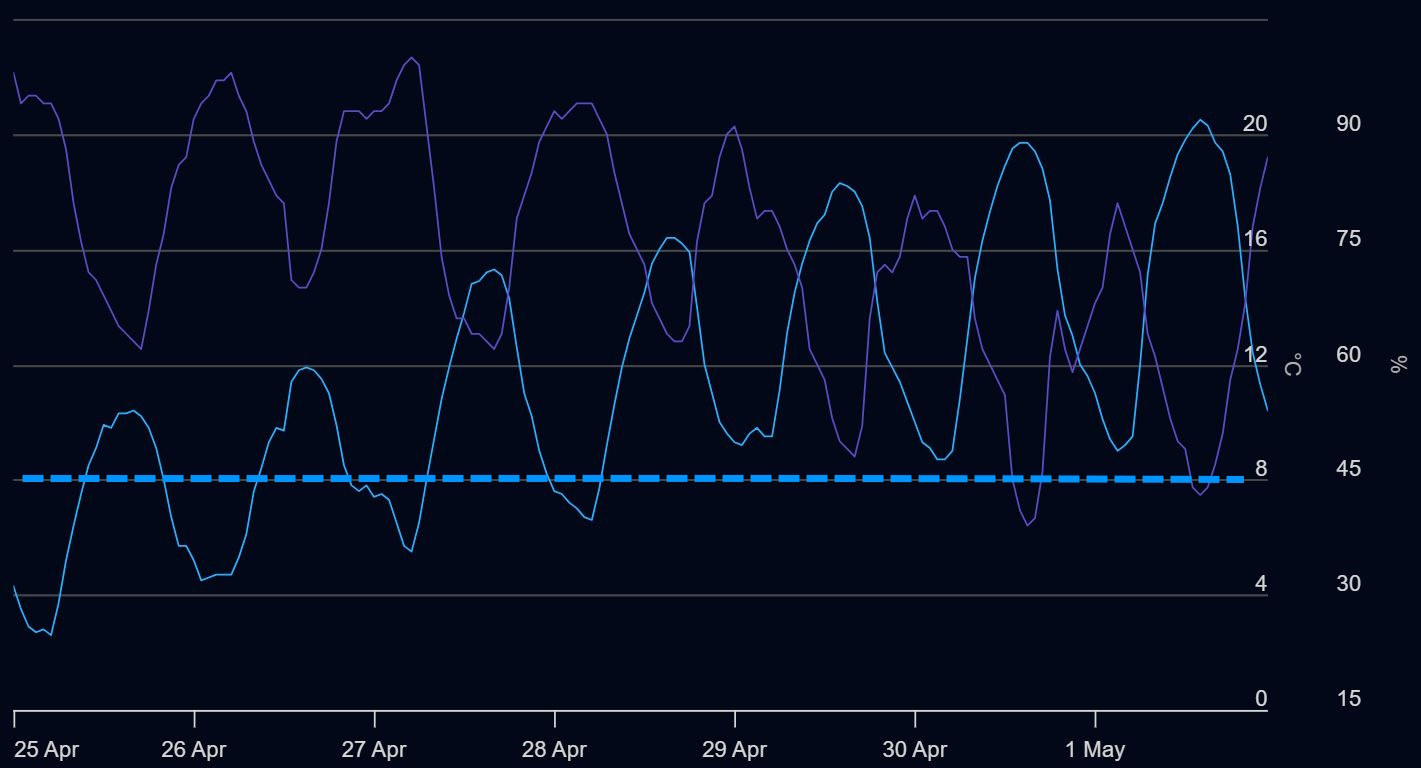
Temp and humidity data from Historical Weather API
Hypothesis
When cold (below say 8°C) the chimney effect should blow out the top entrance, sucking air from deep within the hill. This has been seen previously in snow. All of the dig should be a steady 8°C and 100% humidity. Then when hot the warm surface air will be sucked into the cave and off to the significantly lower entrance, through all that juicy cave we’re going to find soon. During this the entrance will be surface temperature and as you go deeper down our dig the temp will reduce (and humidity increase) slightly before it reaches the logger at the dig face.
Results
The logger read a steady 7°C and 100% humidity for the full week! Big surprise.
Additional observations
On this Thursday the surface temp was over 20°C and the top entrance was draughting in strongly, as expected. The dig was draughting away as expected, but still reading 7°C. What’s more, the spoil pipe to surface was draughting out this cold air, and so was the bottom of the shakehole.
By the end of the session the surface temp had dropped rapidly and all these directions indeed reversed, although the draught speed was noticeably less and the pipe was a very changeable.
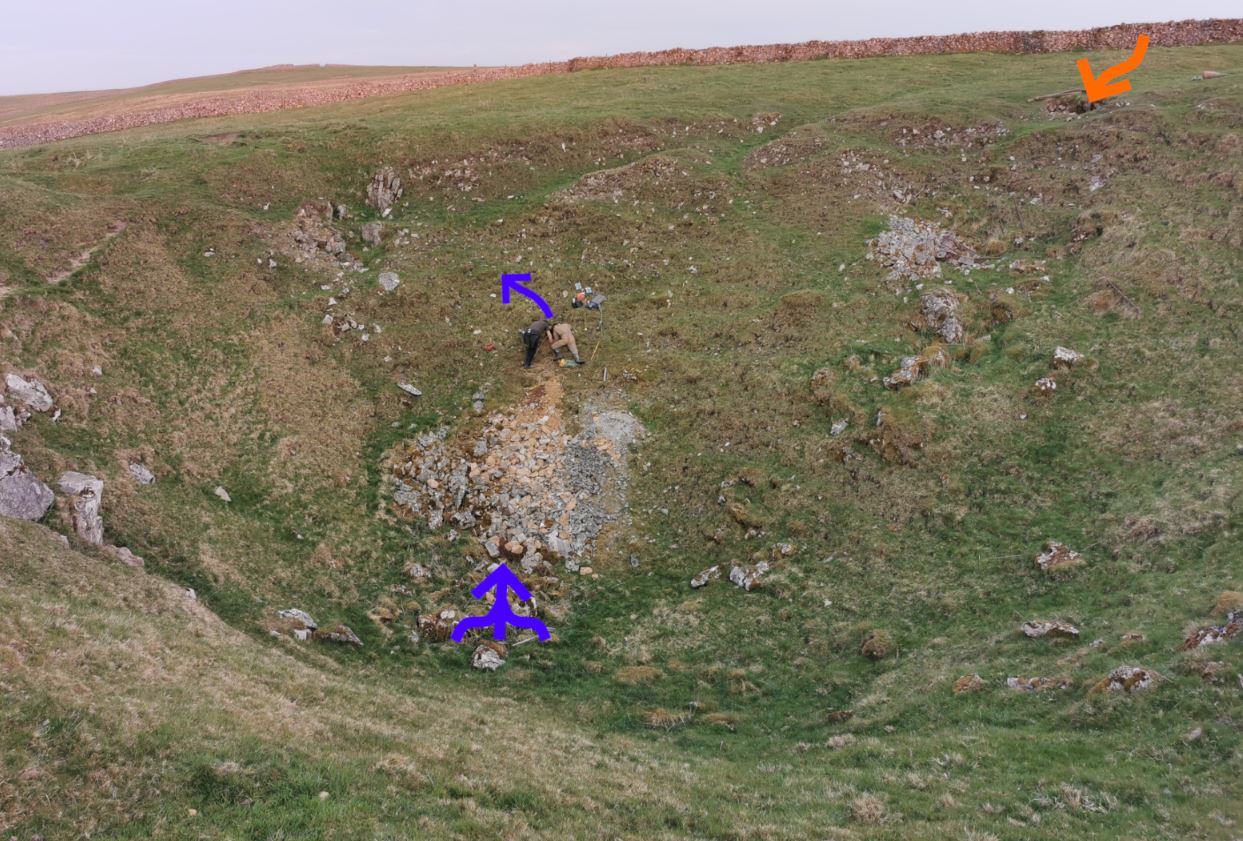
Interpretation
It’s mad such a strong draught can be created with a maximum of 12m of vertical difference. This circular draught doesn’t look good for cave exploration.
The surface air must cool down to cave temp (and humidity) in the ~40m length of the dig, which to me feels crazy fast. This is the only explanation for the steady readings at the dig face. Presumably the extremely high surface area of boulder chokes helps with this rapid thermal transfer, and the high thermal mass means there is was no measurable increase after 7 days of hot weather.
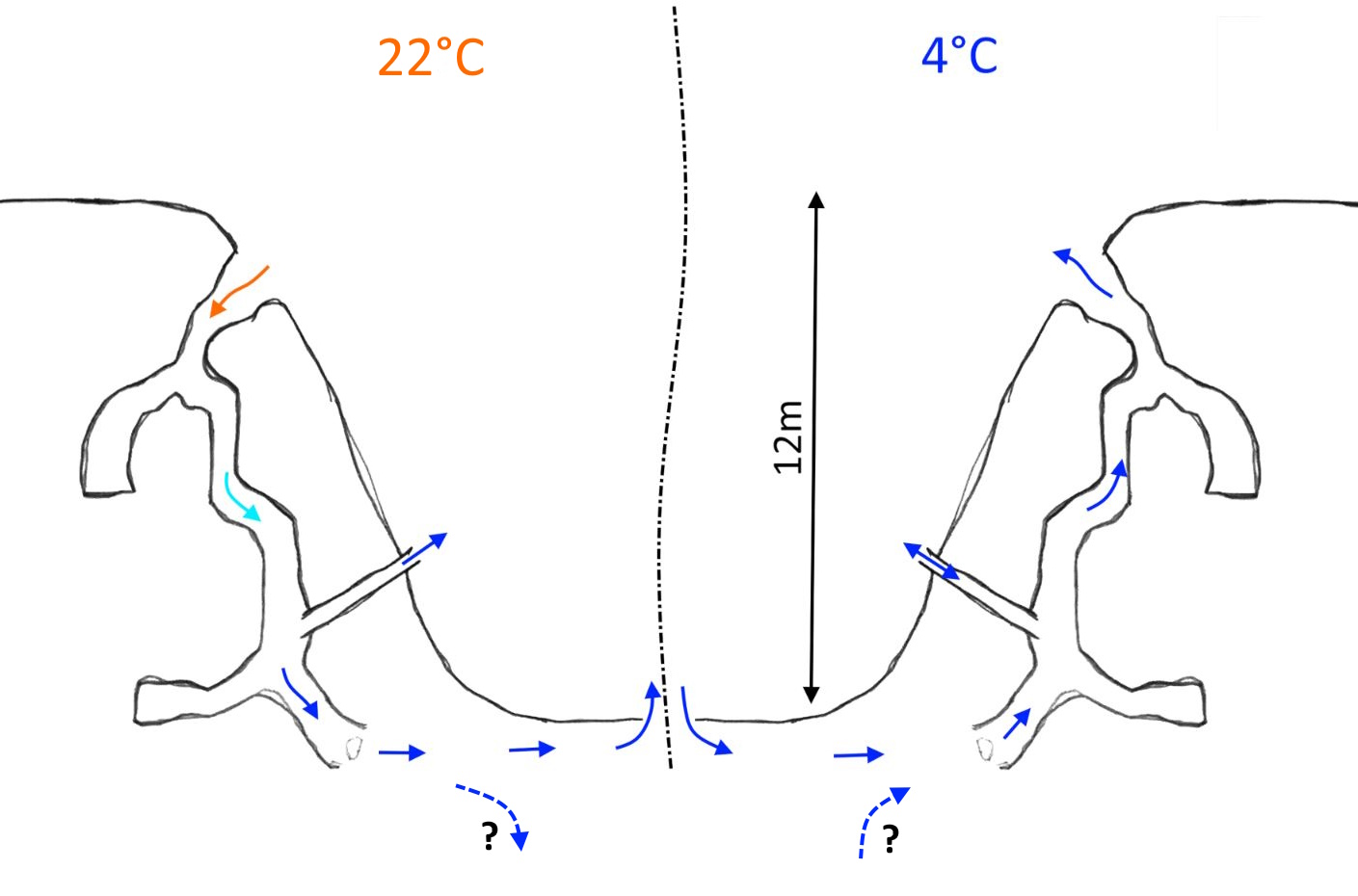
Schematic showing the two conditions side by side
So the draught could well be very misleading and just lead us to the surface. However it may not be totally useless. There is still (limited) potential for an additional input/exit from below. It would need to be quite a restricted route such that the flow is kept to a minimum, otherwise it would overpower the circular draught we are seeing.
My suggestion now is to sink a small, exploratory shaft in the centre of the shakehole and see what happens. If the bottom of the shaft stops draughting quickly then we can assuming it’s probably not coming from deep below. Doesn’t mean it wouldn’t be worth continuing, only that we could probably ignore the draught at this site.